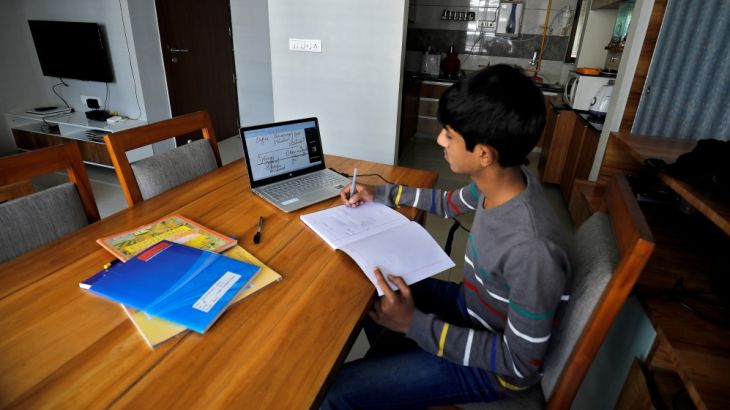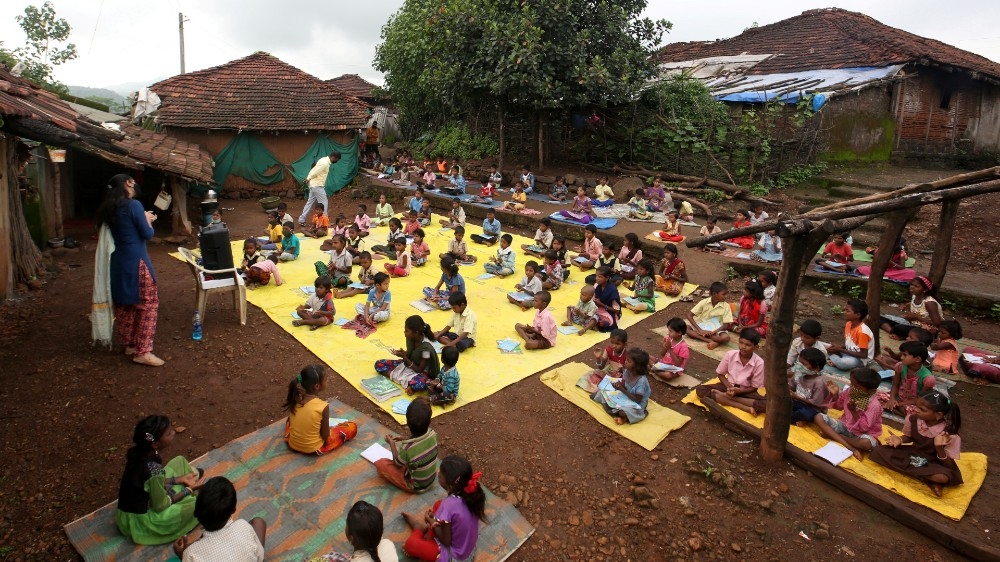Coronavirus forces millions of Indian children to miss school
While many private schools move classes online, millions of other children have no access to computers or internet.

Millions of children in India are missing out on education as schools have been shut for five months now because of the coronavirus outbreak.
India is the world’s third-most hit nation by the novel coronavirus, with nearly 2.4 million cases and more than 47,000 deaths to date.
Keep reading
list of 4 itemsWill the US unemployment rate continue at historic lows?
Mexico’s teachers seek relief from pandemic-era spike in school robberies
‘A bad chapter’: Tracing the origins of Ecuador’s rise in gang violence
While some elite schools – most of them private – have moved classes online, millions of children do not have access to computers, phones, internet, televisions or even electricity.
Only 8 percent of Indian households have a computer and an internet connection.
“Electricity is also a problem – less than half of Indian homes have more than 12 hours of power a day,” said Al Jazeera’s Elizabeth Puranam, reporting from the Indian capital, New Delhi.
“To address the challenges, some are taking classes to those children who don’t have access to technology.”
One such person is university student Satyendra Pal Shakya, who has been running a makeshift straw-hut learning centre for five years in an impoverished New Delhi neighbourhood.
|
|
Shakya told Al Jazeera the centre has “become even more important since the Indian government shut schools five months ago”.
“When online classes started, we saw that many children don’t have online accessories like laptops, tablets, phones and even if they had these things, they don’t have the ability to charge them because … there’s no electricity,” he said.
About 100 students regularly attend English, Maths and Science classes, taught by Shakya and six others who are helping him.
“I really like the classes. Because I really like the teacher, he teaches us really well,” Kiran Shakya, a student at the centre said.
Another student, Brijesh Shakya, said: “We wouldn’t be able to study without these classes and our education would deteriorate and our brain too.”
Shakya and his students reside in one of New Delhi’s many neighbourhoods where people live in makeshift structures, with little or no access to electricity.
Some have walked half an hour from other neighbourhoods to attend the centre.
India’s digital divide
While many regions in India struggle, some like the southern state of Kerala have been relatively better at meeting the educational requirement of students as the pandemic rages on.
Kerala has set up temporary classrooms for students who cannot watch the local government’s pre-recorded classes online or on television.
“These online classes are very easy to understand and if there’s anything we don’t understand, then teachers here help and guide us. We like it a lot,” student Nimisha Pullurampara told Al Jazeera.
Classrooms have been set up throughout the state, even in remote tribal regions.

But Kerala, which has always had one of the best education systems in the country, is an exception. Experts say millions of other Indian children are going to be left behind because of the lockdown.
“We are going to certainly create this digital divide much larger,” Osama Manzar of Digital Empowerment Foundation told Al Jazeera.
However, Manzar said the situation requires “extremely drastic emergency call” by the government and internet service providers, as well as device providers. “We need subsidy on device, we need subsidy on connectivity.”
Manzar said it should not be up to the kindness of individuals to invest in the future of India’s children.